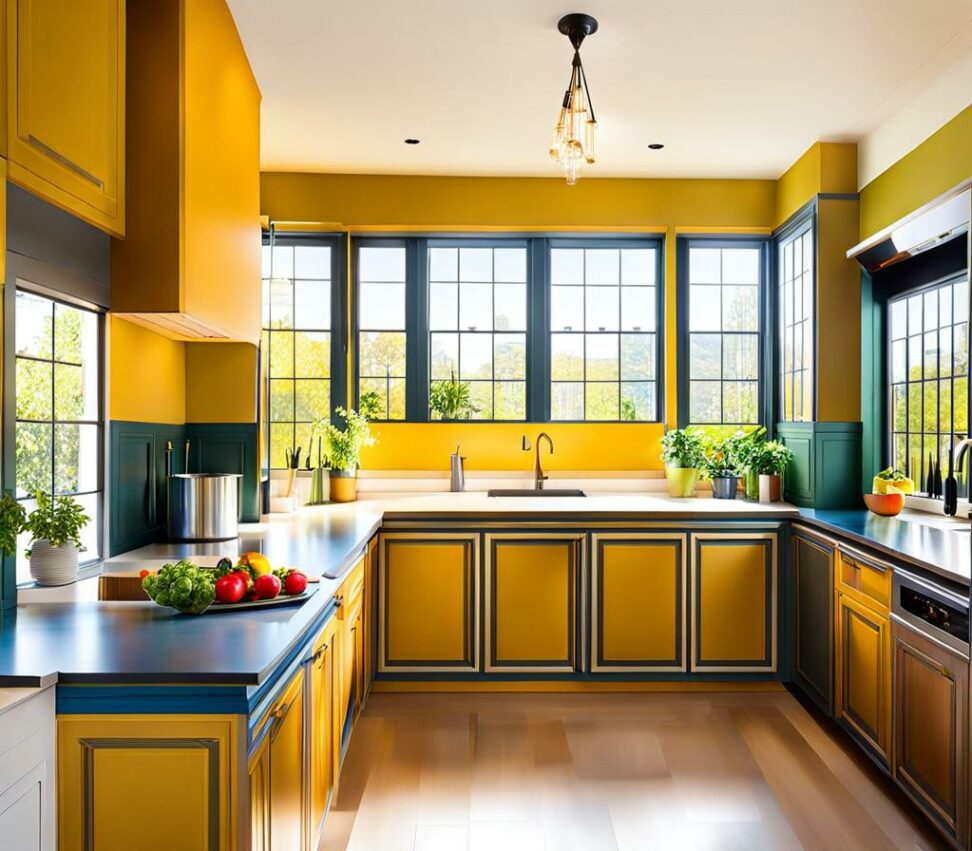Matching Paint to Your Kitchen Cabinets? Here's How to Get it Right
Giving your kitchen cabinets a fresh coat of paint can transform the entire look of your kitchen. But matching the right paint color and finish to your existing cabinets and kitchen decor takes some planning and prep. Follow this guide to successfully match paint to your kitchen cabinets for a stylish, pulled-together look.
First, assess the current colors, materials, and finishes in your kitchen. Take note of countertops, backsplash, flooring, and hardware. Consider how a new cabinet color will coordinate or contrast with these elements. Then determine the overall mood you want to convey – bright and airy, warm and welcoming, soft and relaxed, bold and dramatic, etc. Gather paint swatches in colors that fit the look you envision.

Choosing a Color Scheme for Your Kitchen Cabinets
When selecting a color for kitchen cabinets, it's crucial to consider the existing colors and finishes already in your kitchen. Your cabinet color should complement elements like countertops, backsplash, flooring, and hardware. First, make note of all the materials and finishes in your current kitchen. Granite, marble, and wood countertops pair well with many cabinet colors. Tile or glass mosaic backsplashes offer opportunity for contrast. Hardwood flooring allows flexibility while vinyl or linoleum floors call for coordinating colors.
Next, determine the overall mood you want your kitchen's color scheme to convey. Light neutrals like white, ivory, or light gray cabinets create a bright, airy look. Bolder neutrals like navy or charcoal gray are dramatic. Warm hues like sage green, butter yellow, or brick red give a cozy vibe. Cool tones like powder blue or pale green keep things relaxed. Be sure to select a color that complements the finishes already in your kitchen.
Collect Paint Swatches to Test Colors
Once you've narrowed your cabinet color options, obtain paint swatches from the paint store. Swatches allow you to test colors directly on your cabinets to see how they look on the actual surface at different times of day. Paint a few swatches of your top color contenders on cabinet doors or inside a cabinet. Check them in natural daylight, at night under artificial lighting, and at various times of day. This gives you a good idea of how the color truly appears.
Choosing the Right Paint Finish for Kitchen Cabinets
In addition to color, selecting the appropriate paint finish is key to achieving your desired look. The finish impacts the sheen, reflectivity, and texture of the painted surface. For kitchen cabinets, satin and semi-gloss finishes are typically best.
High-gloss paint has a smooth, shiny, reflective surface. It works well for modern contemporary kitchens but shows imperfections. Flat or matte paint has no sheen and a velvety texture. It's prone to showing scuffs, stains, and marks. Satin finish offers a smooth, subtle glow. Semi-gloss has a harder finish and a bit more luster than satin. Both provide enough sheen for kitchen cabinets to stand up to cleaning while minimizing visible brush strokes.
Tips for Picking the Right Finish
When selecting a finish, make sure to match the door fronts to the cabinet frames. For example, you likely don't want shiny door fronts with flat side panels. Also consider your overall kitchen decor. Satin or semi-gloss finishes complement most styles from traditional to modern. Make sure to get paint sample swatches in your desired finishes to compare.
Preparing Cabinets for Painting
Proper prep is crucial for painted cabinets that look smooth and professional. Start by thoroughly cleaning cabinets to remove grease and dirt. Use a degreasing cleaner to cut through grime. Once dry, lightly sand surfaces to rough them up so the paint can properly adhere. Fill any holes, cracks, or imperfections with wood filler for a seamless look.
Priming Kitchen Cabinets
Always prime cabinets prior to painting. Priming creates a uniform surface for paint to stick to, while blocking stains and wood tannins from bleeding through paint. Use a high-quality oil-based primer specifically formulated for painting cabinets and woodwork. Apply at least two coats of primer, allowing ample drying time between coats. Priming preps your cabinets for a flawless painted finish.
Applying Paint to Kitchen Cabinets
Use high-quality trim brushes to paint cabinet doors and drawer fronts. Look for angled brushes that can easily get into grooves and corners. Foam mini rollers work well for painting cabinet sides and flat areas. Other essential supplies include painters tape, drop cloths, a paint tray, and high-density foam rollers.
When painting, apply paint in thin, even coats using light brush strokes and rolling pressure. Thin coats prevent drips and visibility of brush marks. Allow each coat to fully dry before adding another. Lightly sanding between coats creates an ultra-smooth finish. Work methodically from top to bottom. Maintain a wet edge as you paint. Don't overbrush or overload your roller or brush.
Avoiding Drips and Runs
To prevent drips and runs when painting cabinets, start with cabinet frames then doors. Roll paint on then quickly brush out strokes. Keep your brush well-loaded with paint but not dripping. Paint vertical surfaces first, then horizontals. Work from the top down and maintain a wet edge. Taking these steps will help you achieve a professional, flawless painted finish on your cabinets.
When selecting cabinet paint, stick with top-quality interior latex acrylic formulas. Oil-based paint will take too long to cure and smell strong. For a hard, smooth finish, choose paint brands formulated especially for cabinets and woodwork. Top brands include Benjamin Moore Advance, Sherwin-Williams ProClassic, and PPG Break-Through.
Purchase your paint from a reputable home improvement retailer like Home Depot or Lowes for convenience. Check with local specialty paint stores for professional-grade cabinet paints. Buy enough paint to fully cover cabinets in the needed coats. Having leftovers ensures you can easily touch-up down the road if needed. Follow this guide to successfully match the perfect paint to your kitchen cabinets.